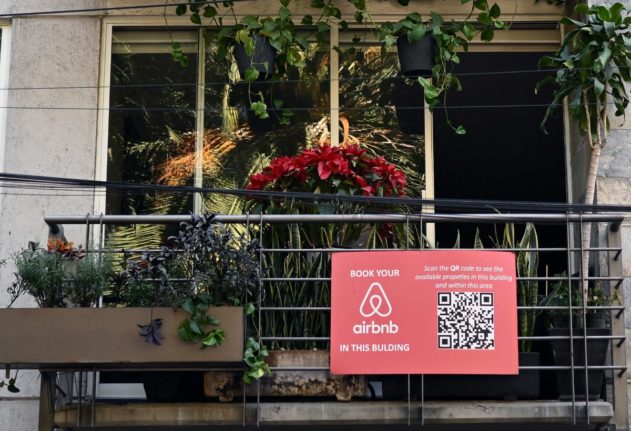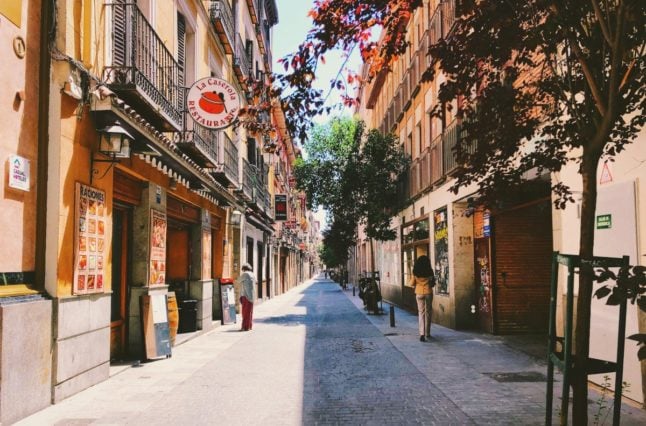By the end of 2023, there were 340,000 short-term holiday lets in Spain, according to the country’s national stats body INE.
Although they barely represented 1.3 percent of the total number of homes in Spain last year, the number of holiday lets increased by 9 percent after increases in all 17 regions except the Balearic Islands.
According to data from Spain’s Tax Agency, there are about 2 million rented homes in the country.
The number of holiday lets fell as a result of the Covid-19 pandemic but it’s been picking up at record speeds, especially in 2022, where an increase of more than 16 percent saw 41 holiday lets set up every day.
The autonomous regions with the most short-term lets were Andalusia (79,065), followed by the Valencia region (58,337), Catalonia (52,026), the Canary Islands (44,376), the Balearic Islands (26,507), Madrid (16,970) and Galicia (18,080).
If the figure for Madrid strikes you as low that’s because the Spanish capital has a big problem with holiday lets without a licence, which in turn calls into question the real figure of Airbnb-style rentals across the country as a whole.
READ ALSO: Why Madrid is struggling with its explosion of illegal holiday lets
According to Spanish tourism association Exceltur, which admittedly has the interests of hoteliers at heart, 60,000 new holiday lets have been added to Spain’s 25 main tourist destinations so far in 2024, describing the rise as “out of control”.
What’s clear is the number of apartamentos turísticos or viviendas turísticas is on the up and that its negative impact for long-term residents who rent, particularly in city centre locations, is widespread.
There are now 28 percent fewer long-term rental properties available in Spain than in 2019 and rents have never been so expensive.
So it’s no surprise that there’s growing discontent among locals particularly in popular tourist spots where rents have spiked, and sometimes a somewhat mistaken sense that wealthy foreigners buying homes in Spain are one of the chief reasons for the current housing crisis (cue the government’s decision to axe golden visas).
READ MORE: Is Spain’s decision to axe golden visa about housing or politics?
Who owns all the holiday lets in Spain?
So what do we know about the people and companies behind the mountain of Airbnb-style lets that according to Housing Minister Isabel Rodríguez are causing “price speculation” in the market?
Are they foreign individuals, Spanish landlords or vulture funds capitalising on Spain’s popularity among tourists?
The Spanish government has not released any data illustrating which group owns the most flats, and whether they’re using it for short-term, temporary or long-term renting.
What it did do in 2023 was divide them into two groups: pequeños propietarios (landlords with up to 10 properties) and grandes tenedores (a major or multi-property landlord with more than 10 properties, five in saturated areas).
The best approximation of the structure of property ownership in Spain is that of the Barcelona Metropolitan Housing Observatory (OHMB), which in a study on the subject published in 2022 concluded that 36 percent of rental apartments in Barcelona belonged to landlords who owned more than 10 properties.
The OHMB also found that 79 percent of landlords only have one property they rent out, but crucially, the remaining 21 percent own 61 percent of Barcelona’s stock of rental properties.
Therefore, in the Catalan capital at least, multi-property landlords, investment companies and vulture funds own a sizable proportion of Barcelona’s rental market.
According to property giants Idealista, legislation introduced to limit prices and rents has actually spurred more landlords and companies to ditch long-term leases for temporary lets of a maximum of 11 months (up by 40 percent) and holiday lets of a maximum of 32 days (up by 9 percent).
From a business perspective, Airbnb-style lets are more profitable than long-term leases as they have no price caps and no nationwide legislation limiting it, so it’s a no-brainer for vulture funds, which bought Spanish real estate at distressed prices and are now capitalising on it.
Caixabank and Blackstone alone own 41,000 rental properties in Spain; how many of them are probably being used now as more lucrative holiday lets?
Spain’s Deputy Prime Minister Yolanda Díaz recently said that property purchases by “vulture funds” and non-resident population represent 40 percent of transactions in Alicante, 38 percent in Santa Cruz de Tenerife, 32 percent in Málaga, 30.85 percent in Girona and 31 percent in the Balearic Islands.
So does that mean that wealthy foreign second home owners own a sizable portion of Spain’s holiday rental market? Not necessarily.
According to Spain’s Real Estate Credit Union (UCI) around 68 percent of international buyers bought properties in the country in 2023 to use as their main home, 21 percent as a second home and just 11 percent as an investment for rental, without specifying if this is long or short-term rental.
This would suggest that individual foreign investors do not make up a large proportion of ‘the Airbnb market’, even though property purchases by foreigners did hit a record 15 percent last year.
Overall, it can be concluded that the number of tourism rentals in Spain is probably higher than the 350,000 suggested by the Spanish government, and that the role real estate investment firms and vulture funds are playing in warping the country’s rental market is most likely underestimated.
READ ALSO: Spain urges regions to limit Airbnb-style lets in ‘stressed rental areas’



 Please whitelist us to continue reading.
Please whitelist us to continue reading.
Spains affordable housing crisis can be reduced substantially by the government or local authorities compulsory purchasing all the abandoned housing developments around Spain. I live in Pinoso Alicante and there are at least 10 abandoned developments here let alone all the abandoned developments in every other town I drive through. Why does the Spanish Government do this or are they controlled by the banks.
I appreciate the analysis that has gone into this piece, and the need to interrogate the knee jerk idea that foreigners are ‘the problem’. It will be interesting to see if the debate shifts at a national level and starts to be more critical of big property companies/multi-investor landlords and vulture capital.
Thanks for this informative piece.